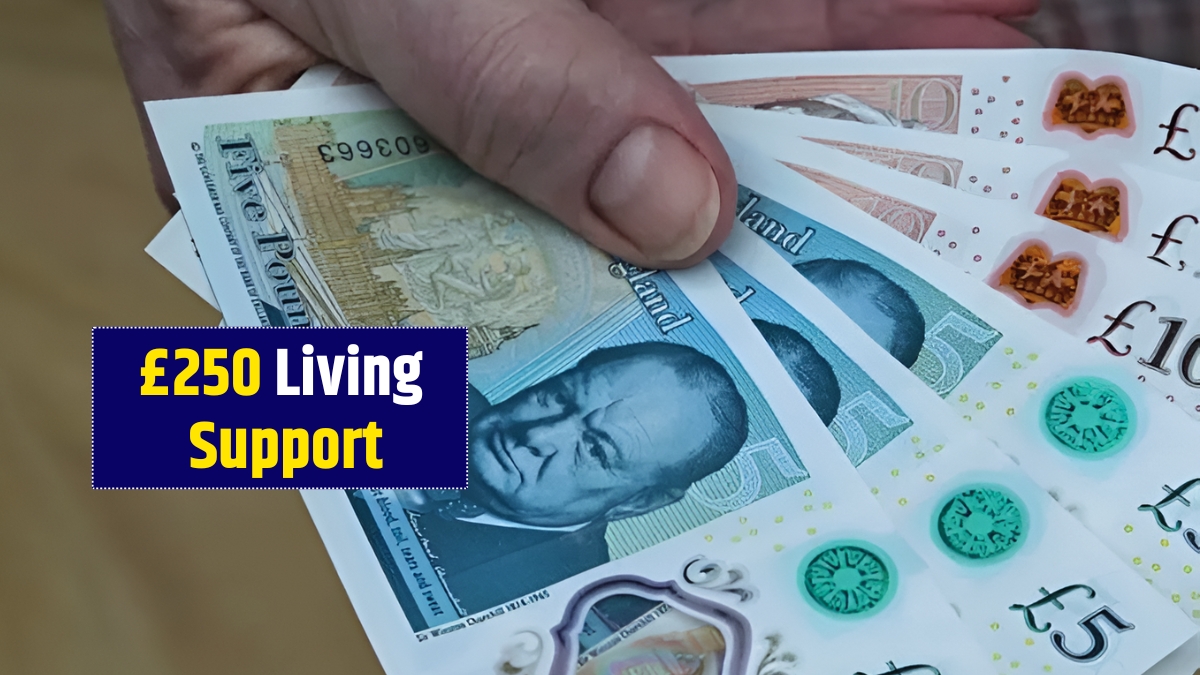The UK government has announced that a £250 Cost of Living Payment will be made this September 2025, bringing much-needed financial relief to millions of struggling households. The one-off payment aims to help families, pensioners, and benefit claimants cope with the ongoing pressures of high living costs, energy prices, and inflation.
As everyday expenses remain elevated, this government-backed support will offer timely help just before the colder months set in. Here’s everything you need to know about who qualifies, when payments will arrive, and how the process works.
What Is the £250 Cost of Living Payment?
The £250 Cost of Living Payment is a tax-free, one-off financial boost issued by the Department for Work and Pensions (DWP) and HM Revenue & Customs (HMRC). It’s designed to support people receiving means-tested benefits, ensuring that those on lower incomes receive extra help as household budgets tighten.
Like previous cost-of-living schemes, no application is needed — eligible claimants will receive the payment automatically into their usual bank accounts. It also won’t affect your other benefits or tax position, so you’ll get the full amount without deductions.
Why the Government Is Issuing the Payment
Living costs across the UK remain at some of their highest levels in decades. Rising prices for food, rent, and energy have continued to put pressure on households, especially those relying on fixed or low incomes.
To help offset these challenges, the government has confirmed this £250 payment as part of its ongoing plan to support vulnerable groups. The timing of the payment — September 2025 — ensures people receive financial assistance ahead of the winter season, when heating and fuel costs usually climb.
Who Will Qualify for the £250 Payment?
Eligibility is based on receiving one or more means-tested benefits during the qualifying period in August 2025.
You will automatically qualify if you receive any of the following benefits:
- Universal Credit
- Income-based Jobseeker’s Allowance (JSA)
- Income-related Employment and Support Allowance (ESA)
- Income Support
- Pension Credit
- Working Tax Credit
- Child Tax Credit
If you were entitled to one of these benefits during the qualifying dates (to be confirmed by DWP and HMRC), you’ll receive the £250 payment automatically in September.
Universal Credit Recipients: How It Works
For those on Universal Credit, eligibility will depend on your assessment period during August 2025.
You’ll qualify if you:
- Had an active Universal Credit award during that time, or
- Had your payment reduced to £0 because of earnings but still received housing or child elements.
However, you won’t qualify if your benefit was reduced to £0 due to sanctions or fraud-related penalties.
Pensioners and the Cost of Living Support
Pensioners receiving Pension Credit will automatically receive the £250 payment as well.
If you haven’t yet applied for Pension Credit, the DWP encourages you to do so. Claims can be backdated for up to three months, meaning that if you were eligible in August, you could still receive both Pension Credit and the Cost of Living Payment once your application is approved.
Thousands of pensioners are still missing out on unclaimed benefits, so checking your eligibility could make a big difference this year.
How and When the Payment Will Be Made
Payments will be made automatically — there’s no need to apply or fill out any forms.
Here’s the expected timeline:
| Event | Date |
|---|---|
| Qualifying benefit period | August 2025 (exact dates to be confirmed) |
| Payment window begins | 25 September 2025 |
| Most payments completed by | 10 October 2025 |
| Contact DWP/HMRC if unpaid | After 20 October 2025 |
The payment will appear in your bank account under a reference such as “DWP COL” or “HMRC COL”, depending on which department issues it.
If you don’t have a bank account, the payment may be sent via cheque or voucher, depending on DWP arrangements.
If You Don’t Receive Your Payment
If you believe you’re eligible but haven’t received the payment by mid-October 2025, here’s what to do:
- Check your bank statement for a separate £250 deposit.
- Confirm you were receiving a qualifying benefit in August.
- Contact the DWP (for Universal Credit, ESA, JSA, Income Support, or Pension Credit).
- Contact HMRC (for Working or Child Tax Credit).
Make sure you have your National Insurance number and benefit details ready when you call.
Can You Receive More Than One Payment?
No — you will only receive one £250 payment per eligible household, even if you claim benefits from both DWP and HMRC. This rule ensures fairness and prevents duplicate payments.
Why This Payment Matters
While £250 may not solve long-term financial pressures, it offers crucial short-term relief for households under strain.
For families, it can help cover food, childcare, or transport costs. For pensioners, it can go toward heating bills and winter essentials. It’s a meaningful boost at a time when budgets are being stretched thin across the country.
Other Support You May Qualify For
The £250 payment is separate from other government schemes. You may also be eligible for:
- Winter Fuel Payment – £100 to £300 for pensioners.
- Cold Weather Payment – £25 per week during severe cold spells.
- Warm Home Discount – £150 off electricity bills.
- Disability Cost of Living Payment – for those on disability-related benefits.
Combining these forms of support can provide extra stability through the winter months.
How to Prepare and Avoid Missing Out
To make sure your payment arrives smoothly:
- Update your bank details with DWP or HMRC if you’ve recently changed accounts.
- Keep an eye on your August 2025 benefit entitlement.
- Watch for official DWP updates confirming the final qualifying dates.
- Beware of scams — the government will never ask you to apply or share personal details for this payment.
Final Thoughts
The £250 Cost of Living Payment 2025 is a lifeline for millions of UK households, offering vital support at a time when inflation and energy costs remain high.
By checking your benefit status and ensuring your records are up to date, you can make sure you don’t miss out on this one-off payment when it arrives this autumn. It may not solve every problem, but for many, it’s the help they need to make it through the months ahead with a little less financial stress.



